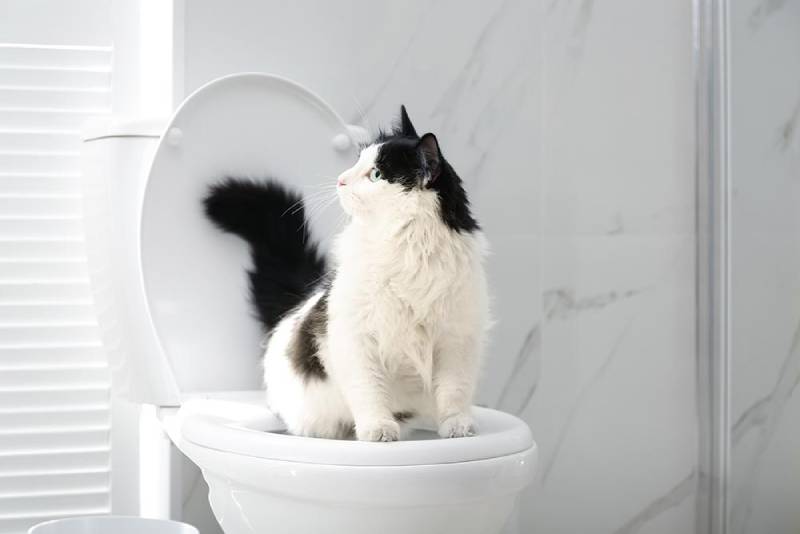Reasons Flushing Cat Poop Down Your Toilet Isn't a Good Idea - Advice for Safer Disposal
Reasons Flushing Cat Poop Down Your Toilet Isn't a Good Idea - Advice for Safer Disposal
Blog Article
What are your ideas concerning How to Dispose of Cat Poop and Litter Without Plastic Bags?

Intro
As feline proprietors, it's essential to be mindful of just how we take care of our feline buddies' waste. While it might appear convenient to purge feline poop down the commode, this technique can have destructive repercussions for both the setting and human health.
Alternatives to Flushing
Fortunately, there are more secure and more liable methods to take care of cat poop. Think about the adhering to alternatives:
1. Scoop and Dispose in Trash
The most usual method of taking care of pet cat poop is to scoop it into a biodegradable bag and throw it in the garbage. Be sure to utilize a devoted trash inside story and take care of the waste promptly.
2. Usage Biodegradable Litter
Go with eco-friendly pet cat trash made from products such as corn or wheat. These trashes are environmentally friendly and can be safely thrown away in the garbage.
3. Hide in the Yard
If you have a lawn, think about burying feline waste in a designated area away from veggie yards and water resources. Make certain to dig deep adequate to stop contamination of groundwater.
4. Set Up a Pet Waste Disposal System
Purchase a family pet waste disposal system especially created for cat waste. These systems use enzymes to break down the waste, reducing smell and ecological effect.
Health Risks
In addition to ecological problems, purging feline waste can also pose wellness threats to people. Feline feces may have Toxoplasma gondii, a bloodsucker that can trigger toxoplasmosis-- a potentially extreme ailment, especially for pregnant females and individuals with weakened body immune systems.
Environmental Impact
Purging cat poop presents damaging pathogens and bloodsuckers right into the supply of water, posing a substantial danger to aquatic ecological communities. These pollutants can negatively influence marine life and compromise water top quality.
Conclusion
Liable family pet ownership expands beyond supplying food and shelter-- it additionally includes correct waste administration. By refraining from purging cat poop down the bathroom and opting for different disposal techniques, we can decrease our environmental impact and safeguard human wellness.
Why Can’t I Flush Cat Poop?
It Spreads a Parasite
Cats are frequently infected with a parasite called toxoplasma gondii. The parasite causes an infection called toxoplasmosis. It is usually harmless to cats. The parasite only uses cat poop as a host for its eggs. Otherwise, the cat’s immune system usually keeps the infection at low enough levels to maintain its own health. But it does not stop the develop of eggs. These eggs are tiny and surprisingly tough. They may survive for a year before they begin to grow. But that’s the problem.
Our wastewater system is not designed to deal with toxoplasmosis eggs. Instead, most eggs will flush from your toilet into sewers and wastewater management plants. After the sewage is treated for many other harmful things in it, it is typically released into local rivers, lakes, or oceans. Here, the toxoplasmosis eggs can find new hosts, including starfish, crabs, otters, and many other wildlife. For many, this is a significant risk to their health. Toxoplasmosis can also end up infecting water sources that are important for agriculture, which means our deer, pigs, and sheep can get infected too.
Is There Risk to Humans?
There can be a risk to human life from flushing cat poop down the toilet. If you do so, the parasites from your cat’s poop can end up in shellfish, game animals, or livestock. If this meat is then served raw or undercooked, the people who eat it can get sick.
In fact, according to the CDC, 40 million people in the United States are infected with toxoplasma gondii. They get it from exposure to infected seafood, or from some kind of cat poop contamination, like drinking from a stream that is contaminated or touching anything that has come into contact with cat poop. That includes just cleaning a cat litter box.
Most people who get infected with these parasites will not develop any symptoms. However, for pregnant women or for those with compromised immune systems, the parasite can cause severe health problems.
How to Handle Cat Poop
The best way to handle cat poop is actually to clean the box more often. The eggs that the parasite sheds will not become active until one to five days after the cat poops. That means that if you clean daily, you’re much less likely to come into direct contact with infectious eggs.
That said, always dispose of cat poop in the garbage and not down the toilet. Wash your hands before and after you clean the litter box, and bring the bag of poop right outside to your garbage bins.
https://trenchlesssolutionsusa.com/why-cant-i-flush-cat-poop/

I discovered that blog entry on Can You Flush Cat Poop Down The Toilet? when exploring the internet. Do you know about somebody else who is in the market for Don’t flush cat feces down the toilet? Take a moment to promote it. Thanks for your time. Kindly check our website back soon.
Or Book Technician Here Report this page